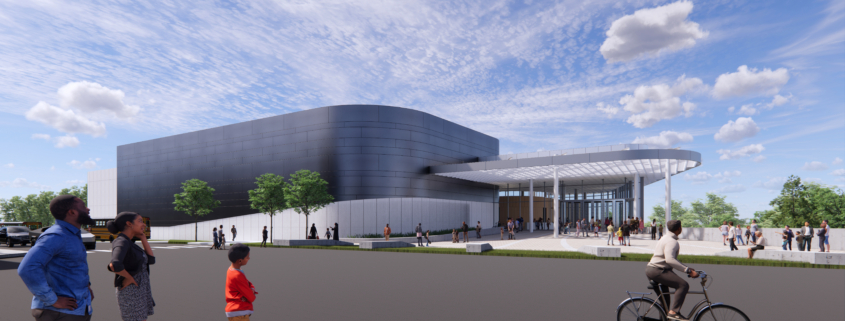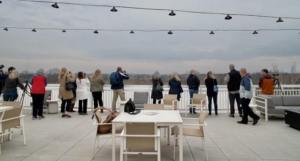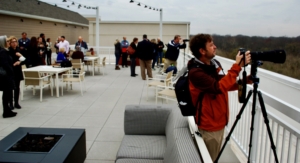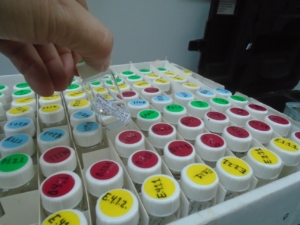A Work Group Experience with Fairfax County Early Detection Rapid Response (EDRR) Program
Photo: By Sara Tangren, Participants of March 21st work trip for the Fairfax County Early Detection Rapid Response (EDRR) program
Article by FMN Susan Martel

Photo: Corydalis incisa by Gary Fleming, Virginia Department of Natural Resources(throughBugwood.org)
FMN members and other volunteers took part in a work trip on March 21 as part of the Fairfax County Early Detection Rapid Response (EDRR) program to search for emerging invasive plants. This trip focused on finding incised fumewort (Corydalis incisa), a member of the poppy family. Naturalized populations were first reported in New York in 2005 and have slowly made their way through the mid-Atlantic region. Led by FCPA staff member Jas Darby, the team of 10 found the invader in Difficult Run Trail near Leigh Mill-Ramey Meadows Park and mapped it over an area of 10 acres. Pink flags and ribbons were used to delineate the extent of the spread, and photos were uploaded to iNaturalist to document its presence. Control measures will now be directed at the plants the group found.
Identifying incised fumewort is tricky when not in flower, because it can be mistaken for a native species, C. flavula, which has a similar appearance. A careful look at the sub-leaflets is required to discern the invasive species from the native species. The sub-leaflets of the native plant has about 5-7 teeth or lobe tips whereas the invasive plant has two or three times the number (see line drawing below). When in bloom, the two are easily distinguished because the flowers of C. incisa are purple and those of C. flavula are yellow. Incised fumewort reproduces by seed capsules, which open explosively to spray small black seeds up to 10 feet away. The goal of the EDRR program is to eradicate this and other early detection species by taking rapid action to prevent their spread. Additional work trips are planned for April 10, 11, 17, and 18 at locations to be determined. Use this link to sign up: https://volunteer.fairfaxcounty.gov/custom/1380/opp_details/179794.

Line drawing of the two types of leaves by Sara Tangren, National Capital PRISM, CC BY.

















 VMN trainee (Fairfax Chapter) Stephanie Johnson was recently featured in a newsletter article published by the Northern Virginia Conservation Trust. Steph is in the current Spring 2023 FMN class and is also a Master Gardener, a member of the Native Plant Society, a small business owner, conservationist, and landscape designer.
VMN trainee (Fairfax Chapter) Stephanie Johnson was recently featured in a newsletter article published by the Northern Virginia Conservation Trust. Steph is in the current Spring 2023 FMN class and is also a Master Gardener, a member of the Native Plant Society, a small business owner, conservationist, and landscape designer.


